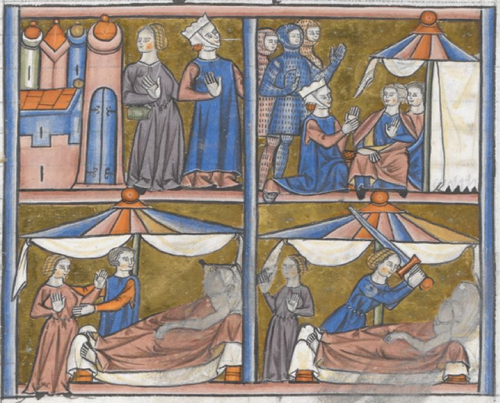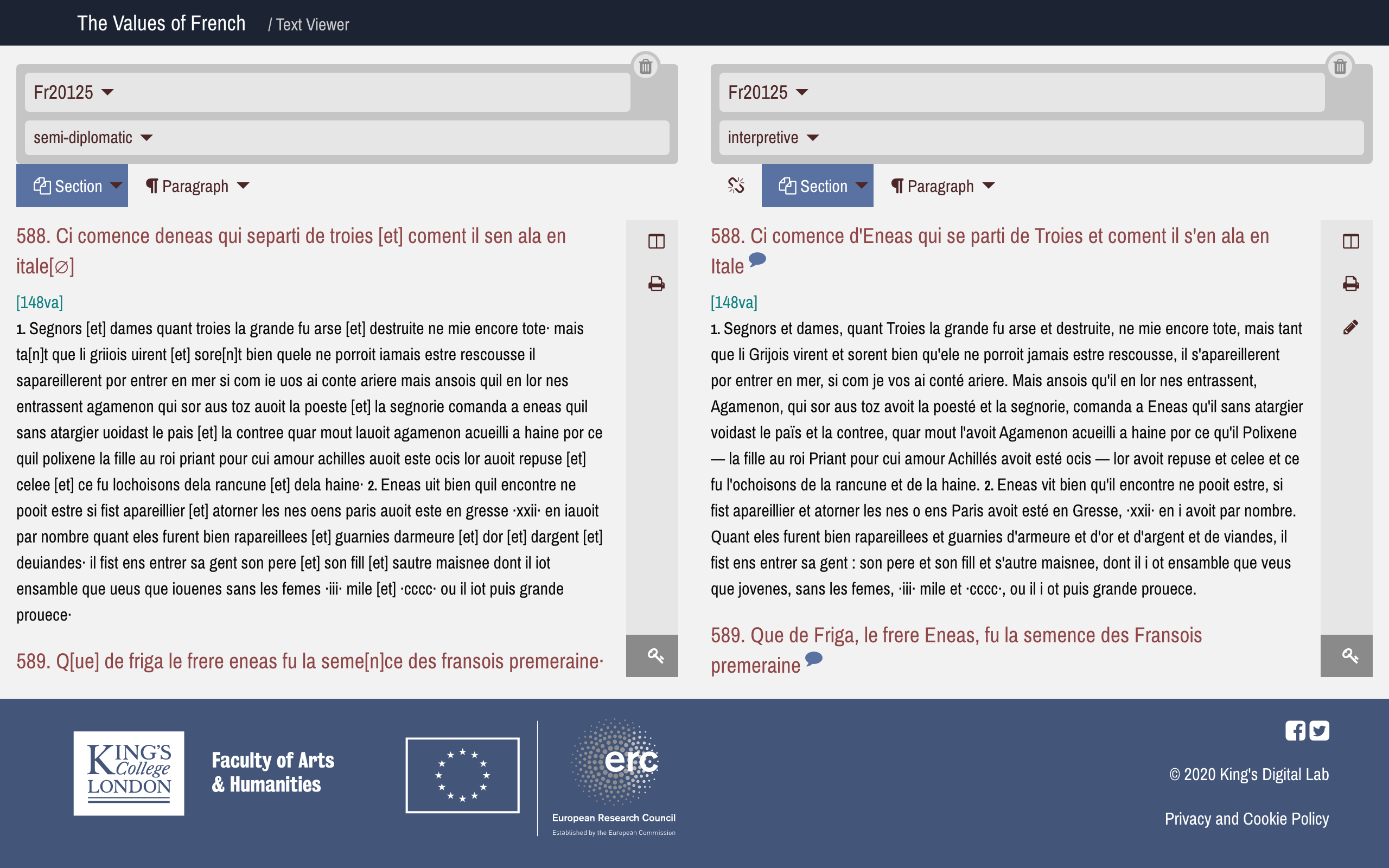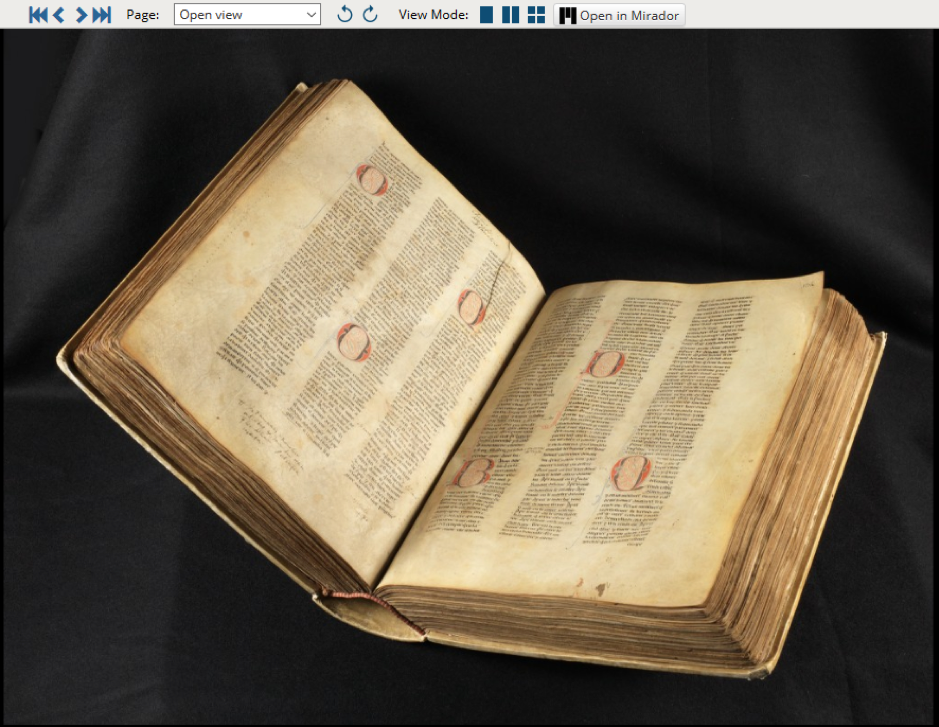Medievalist Objects: Parchment and the Computer Screen
Alice Hazard is Teaching Fellow in Medieval French Studies at King’s College London. She is currently writing a book about the face in medieval art and literature.
As a relative outsider to this project, I wanted to write about some of the broader reflections it provokes about the nature of the medieval literary object as it appears to us, and is re-worked, re-fashioned by us, in the twenty-first century.
I have been thinking recently about how the computer screen and medieval parchment have come to be such close, and yet essentially odd, bedfellows. Of course, the straightforward answer is that the computer – and phone, and tablet – screen is the support via which we now view, share, create, preserve and analyse all kinds of information. But the elephant in the room remains: what happens to our perception of the medieval literary object when it radically changes form? When for many scholars and students today the first, and sometimes only, interaction with a medieval manuscript is via a computer screen? The same questions can be asked of printed critical editions of medieval texts, but the digital is so different from either parchment or paper that the stakes are higher when we ask those same questions.
Many scholars have explored the connections between reader and text that occur through sensory interaction with parchment: Kathryn Rudy discusses the deep spiritual connection inherent in the act of kissing and touching the parchment page; Sarah Kay talks about the ‘suture’ between the reader’s skin and the skin of the text; PhD student Armand De Filippo at Leicester recently devised an exhibition in which an Ethiopic manuscript was ‘deconstructed’ into its constituent parts in order for the visitor to experience the touch, smell and even taste of the object. Intuitively, it seems reasonable to say that all this is lost through the various different forms of digitisation. Not that we can no longer smell or touch manuscripts, but that we don’t, or that we feel like we don’t have to. It feels legitimate to worry that we will forget what a manuscript is. And not necessarily because of any failures of the digital revolution but, rather, because of its successes. It is hard to argue with the vastly increased accessibility of digitised manuscripts that might be seen to replace the library reading room, and hard to argue with the hugely useful work that projects such as TVOF do, with the new frameworks they provide, the new connections they create, and the new analysis they provoke. At the same time, some of the most interesting thinking around digital medievalism is that which acknowledges its shortcomings, and which uses them as a way of reflecting on the role of the medieval in the twenty-first century.

Evidence of rubbed images in the Histoire ancienne (Judith beheads Holofernes). British Library, Additional 19669, f. 129rb. Reproduced with permission from the British Library Board.
In his blog post here on 6th July 2018, Simone Ventura reflects on some of the questions raised at a conference in Verona on the digital revolution in text editing. He notes, in particular, the problems related to the furious, funding-led, drive towards more data and more innovation. For instance, a consequence of this is that projects that attract funding often end up doing essentially the same thing but in different, innovative, ways. Another consequence is that the sheer quantity of data being accumulated, along with the risk of obsolescence associated with digital outputs that are tied to fixed-term funding pots, means that much of it will end up at best inaccessible and, at worst, in data garbage dumps. On a more prosaic note, the speed at which manuscript digitisation, in particular, is happening, can have practical effects on our ability to maximise its use: one of the most comprehensive databases of digitised medieval manuscripts, the UCLA Catalogue of Digitized Medieval Manuscripts, ceased its project in 2013 because of the impossibility of keeping up with the increasing volume of data to compile.

Gallica viewing pane for BnF fr. 20125 as book. Source: Gallica.
There are different kinds of questions to be asked, too, of this seismic shift in how we view and interact with text and texts. The age-old question of the status of the copy or reproduction rears its head again, as does the question of what, as medievalists, our object of study is. In the context of a discussion of the relationship between medieval studies and medievalism, Stephanie Trigg and Thomas Prendergast note that medievalism is sometimes accused of examining a ‘false object’ or, after Baudrillard, ‘third order simulacra’ that replace the ‘true’ Middle Ages. Are digital editions medieval objects viewed in new lights, in new and perhaps more ‘authentic’ configurations? Or are they somehow medievalist objects, forged at the juncture of the medieval and the modern, and belonging fully to neither?
What is at stake in these questions, then, is what it is that we are interacting with when we read a digital edition or a digitised manuscript. And, indeed, to what extent we are aware of what it is we are interacting with. While we might worry about losing sight of a ‘true’ medieval object, or perhaps about the loss of sensory interaction with texts from the past, or about digital obsolescence, digital technology sometimes answers its own questions. De Filippo writes of his exhibition that it is digital technology that in fact allows us to experience the materiality of the medieval manuscript in a way that was not possible, or at least not easy, before. He says:
Not only does the digital version of the manuscript rupture our habit of considering the page of a manuscript to be two-dimensional, but it signposts potential gateways to ‘inaccessible pasts’. By refocussing on the materiality of the manuscript and exploiting digital media to enable physical and sensory encounters with medieval manuscript materials, we can expand the potential for different ways of knowing. Knowing that is not exclusively intellectual but is enabled via our sensory modalities and though our imaginations and emotions. (Armand De Filippo, ‘The Beast in Me’, read here)
Although the purpose of De Filippo’s exhibition is different from digital edition projects like TVOF, both use digital technology to lend prominence to those features of manuscripts that tend to get flattened out, or entirely lost, in print editions. De Filippo recuperates the sensory via the digital, and TVOF’s text viewer allows the reader to see semi-diplomatic and interpretive versions of the Histoire side-by-side, thus reinserting the manuscript into the twenty-first century reading experience and serving as a constant reminder of what it is we are actually reading.

TVOF's text viewer with interpretive and semi-diplomatic versions of the Histoire ancienne side-by-side.
Alice Hazard
Bibliography
Armand De Filippo, ‘The Beast in Me’, <https://staffblogs.le.ac.uk/specialcollections/2018/06/08/the-beast-in-me-guest-post-by-armand-de-filippo-museum-studies/> [accessed 20 February 2020].
Sarah Kay, ‘Legible Skins: Animals and the Ethics of Medieval Reading’, Postmedieval: A Journal of Medieval Cultural Studies, 2.1 (2011), 13–32.
——— Animal Skins and the Reading Self in Medieval Latin and French Bestiaries (Chicago: The University of Chicago Press, 2017).
Thomas A. Prendergast, and Stephanie Trigg, Affective Medievalism: Love, Abjection and Discontent (Manchester: Manchester University Press, 2019).
Kathryn M Rudy, ‘Kissing Images, Unfurling Rolls, Measuring Wounds, Sewing Badges and Carrying Talismans: Considering Some Harley Manuscripts through the Physical Rituals They Reveal’, Electronic British Library Journal, 2011.

Bern, Burgerbibliothek, Cod. 113, Open view – Composite Manuscript: Garin le Loherain, Perceval, Chroniques, Parthenopeus de Blois, Durmart le Gaulois etc., French. Source: E-codices.